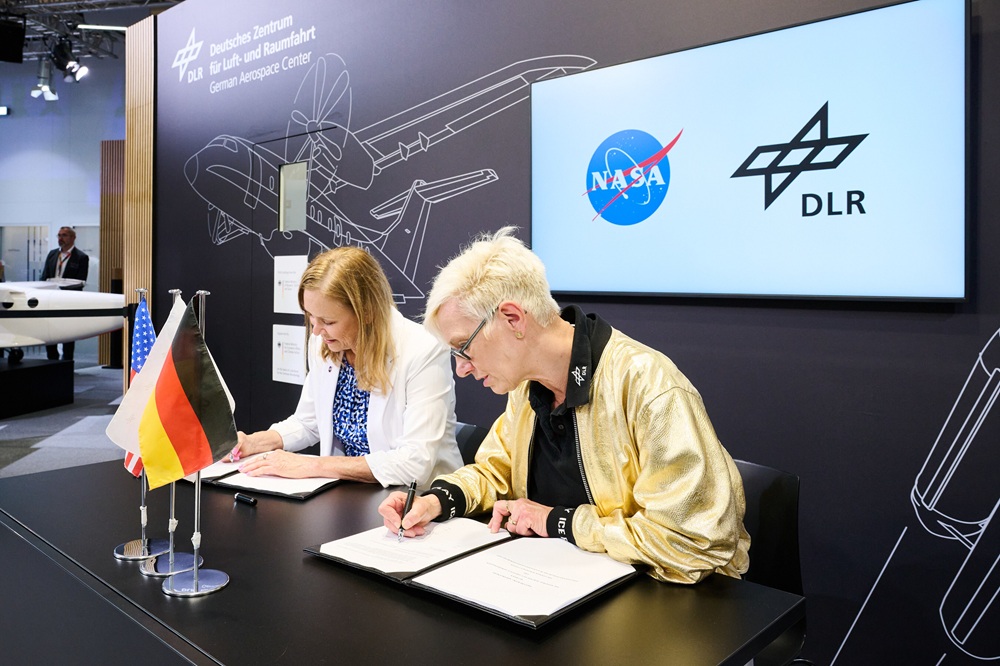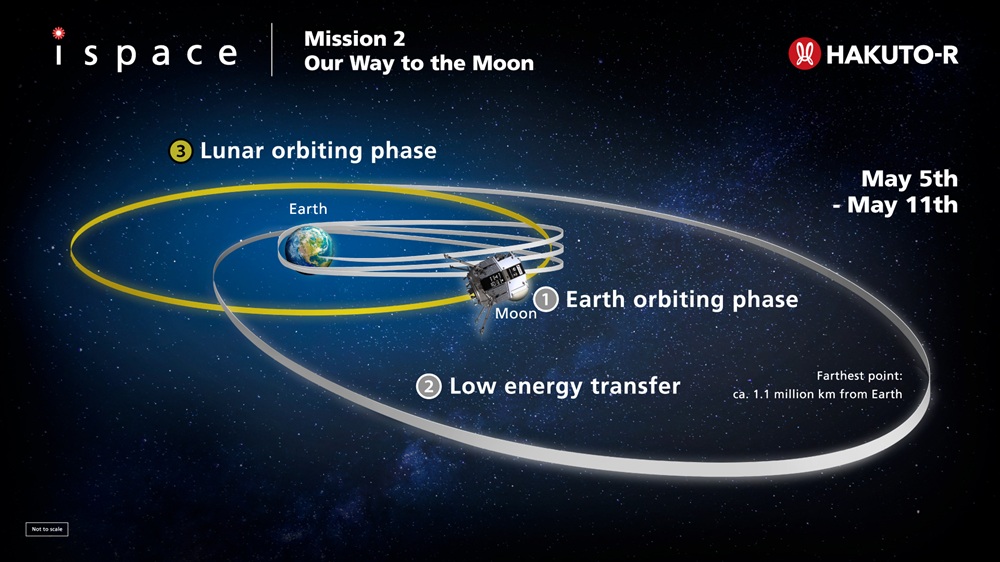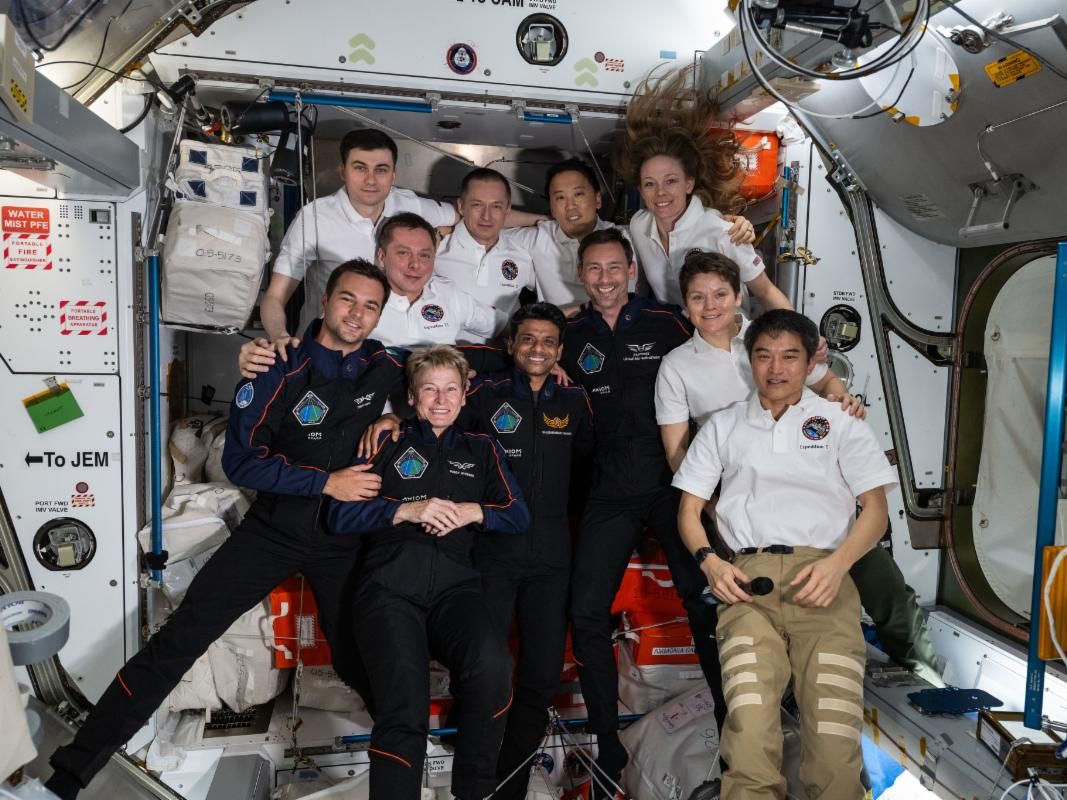Paris: In a noteworthy stride for international space collaboration, NASA and the German Aerospace Center (DLR) have formalized an expanded partnership to advance space medicine and radiation research as part of the Artemis campaign. The agreement, signed by acting NASA Administrator Janet Petro and DLR Executive Board Chair Anke Kaysser-Pyzalla at the Paris Air Show, underscores the shared commitment to safeguarding astronaut health on future Moon and Mars missions.
The renewed NASA-DLR alliance builds on a successful history of joint research, particularly in radiation mitigation for human spaceflight. As NASA pursues the Trump-Vance Administration’s vision of sustained lunar and Martian exploration, minimizing crew exposure to space radiation remains a top priority. The Artemis campaign, which aims to establish a long-term human presence on the Moon, relies on robust international partnerships and cutting-edge technology to address the unique hazards of deep space.
A centerpiece of the new agreement is the deployment of DLR’s advanced M-42 EXT (extended) radiation detectors aboard the Orion spacecraft during the Artemis II mission. Scheduled for launch no later than April 2026, Artemis II will be the first crewed mission of the Artemis program, sending four astronauts on a 10-day journey around the Moon and back.
Four M-42 EXT detectors, representing a significant technological leap from previous models, will monitor radiation levels throughout the mission. These next-generation instruments offer six times higher energy resolution than those used on Artemis I, along with enhanced electronics and improved battery life. The data they collect will be vital for developing effective protective measures for astronauts on future long-duration missions beyond low Earth orbit.
“In keeping with the historic agreements NASA has made with international partners as a part of Artemis, I am pleased to sign a new NASA-DLR joint agreement today, to enable radiation research aboard Artemis II,” said acting NASA Administrator Janet Petro. “The German Aerospace Center has been a valuable partner in Artemis, having previously worked with NASA to test technology critical to our understanding of radiation on humans aboard an Orion spacecraft on Artemis I and providing a CubeSat as part of Artemis II. Following a productive meeting between President Trump and German Chancellor Merz earlier this month, I am excited to build upon our great partnership with Germany.”
DLR’s expertise in space radiation research was prominently demonstrated during Artemis I in late 2022. The mission featured the MARE (Matroshka AstroRad Radiation Experiment) project, which included 12,000 passive and 16 active M-42 detectors embedded in two mannequins, Helga and Zohar. These mannequins, modeled on the female human body, provided the first continuous radiation measurements ever recorded beyond low Earth orbit. The experiment compared radiation exposure with and without protective shielding, yielding a comprehensive dataset that is now informing the design of future missions and astronaut safety protocols.
“To develop effective protective measures against the impact of space radiation on the human body, comprehensive and coherent radiation measurements in open space are essential,” stated Anke Pagels-Kerp, DLR’s divisional board member for space. “We are now excited to take the next step together with NASA and send our upgraded radiation detectors around the Moon on the Artemis II mission.”
The Artemis campaign is emblematic of a new era in space exploration, characterized by international cooperation and technological innovation. DLR’s contribution of the M-42 EXT detectors to Artemis II highlights the importance of pooling global expertise to tackle the challenges of deep space travel. Alongside DLR, NASA is working with other international partners to fly scientific payloads and CubeSats on Artemis II, further expanding the mission’s scientific reach and collaborative spirit.
Mission Overview: Artemis II
Launch Vehicle: Space Launch System (SLS) Block 1
Spacecraft: Orion, carrying four astronauts (three from NASA, one from the Canadian Space Agency)
Duration: Approximately 10 days
Trajectory: Lunar flyby and return to Earth
Key Objectives: Test Orion’s life support and performance, gather deep space radiation data, and validate crewed operations beyond low Earth orbit
The continued partnership between NASA and DLR, exemplified by the integration of M-42 EXT detectors on Artemis II, is a critical step in preparing for humanity’s next giant leap. The insights gained from this mission will inform the development of advanced shielding, mission planning, and health protocols, paving the way for long-duration stays on the Moon and eventual crewed missions to Mars.
As the Artemis campaign forges ahead, NASA and its international partners remain steadfast in their commitment to exploration, innovation, and the protection of those who venture beyond our planet.



![Artist's rendering of Moonraker, a smallsat mission that will map the lunar poles in unprecedented detail and de-risk future landing sites. [Credit: NUVIEW]](https://spacenewscast.com/wp-content/uploads/2025/06/Moonraker_Satellite_Rendering.jpg)

